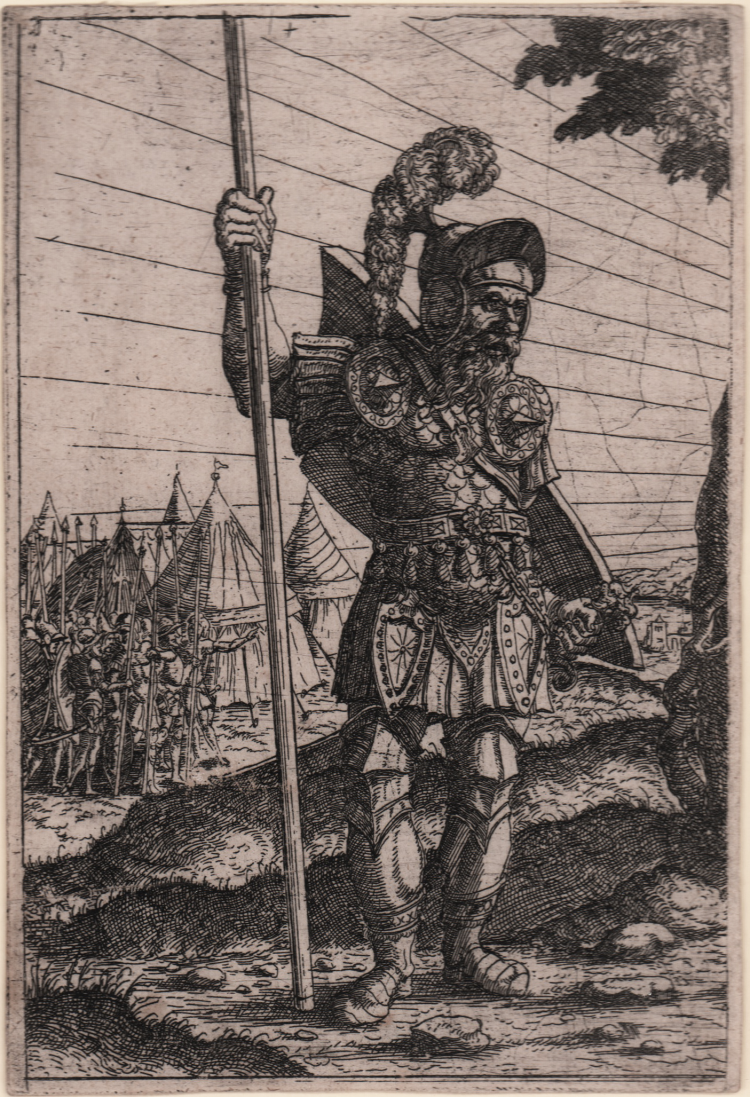



| Reference: | S30003 |
| Author | Hans LAUTENSACH |
| Year: | 1551 |
| Measures: | 118 x 172 mm |


| Reference: | S30003 |
| Author | Hans LAUTENSACH |
| Year: | 1551 |
| Measures: | 118 x 172 mm |
Etching, 1551, without signature.
Magnificent work, printed on contemporary laid paper with incomplete “Pilgrim” watermark, trimmer to platemark, in perfect condition.
In the first years of the XVI century some German artists started to study and work on landscapes, both in painting and engraving, without any figure. For the first time in Northern Europe these artists were realizing landscapes not only as a background of a scene, but as main theme of a subject.
The two most relevant interpreters of the so called Danube School, due to their birthplace, were Albrecht Altdorfer and Wolf Huber. Hans Lautensack was also part of the same group; his artistic reputation was built tank to the engravings he realized since his training in Nuremberg, where he lived with his family. His main production shows basically landscapes (Hollstein 7-34) and portraits (Hollstein 48-76). In 1554 Emperor Ferdinando I brought the artist to Vienna, where Lautensack realized a considerable amount of portraits of humanists and people belonging to the royal court. He thus introduced a new style in portraiture, realizing his subjects with an outstanding landscape in the background. Though he called himself “a painter”, no painting belonging to this artist is known.
Ex collection Germanischen Nationalmuseums di Norinberga (Lugt 1076).
|
Hollstein 2; Bartsch 51.
|
Hans LAUTENSACH (Bamberg, 1520 circa - Vienna, 1566)
|
German printmaker, draughtsman and medallist. Often erroneously referred to as Hans Sebald Lautensack, he was the son of Paul Lautensack (1478–1558), a painter and organist from Bamberg. In 1527 his family moved from Bamberg to Nuremberg, where he probably, like his brother Heinrich Lautensack (1522–68), trained as a goldsmith. Although he referred to himself as ‘pictor’, no paintings by him are known. His artistic reputation lies with his etched oeuvre, which consists primarily of historical or biblical subjects, portraits and pure landscapes. He has also been credited with several drawings and carved moulds for six portrait medals.
|
|
Hollstein 2; Bartsch 51.
|
Hans LAUTENSACH (Bamberg, 1520 circa - Vienna, 1566)
|
German printmaker, draughtsman and medallist. Often erroneously referred to as Hans Sebald Lautensack, he was the son of Paul Lautensack (1478–1558), a painter and organist from Bamberg. In 1527 his family moved from Bamberg to Nuremberg, where he probably, like his brother Heinrich Lautensack (1522–68), trained as a goldsmith. Although he referred to himself as ‘pictor’, no paintings by him are known. His artistic reputation lies with his etched oeuvre, which consists primarily of historical or biblical subjects, portraits and pure landscapes. He has also been credited with several drawings and carved moulds for six portrait medals.
|